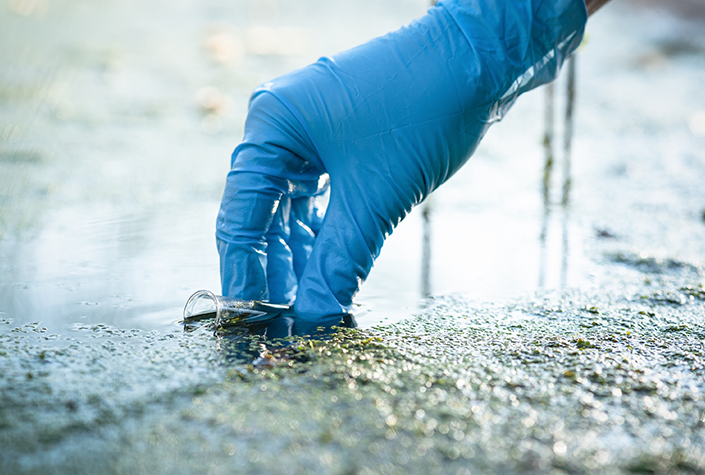After Harvey: Pollutants threaten neighborhood with high cancer risks

The unprecedented rainfall from Hurricane Harvey in 2017 brought more than flood damage to southeast Texas. For people living in environmental justice communities such as the Manchester neighborhood near the Houston Ship Channel, heavy rainfall and flooding may have increased risks of exposure to harmful chemicals from nearby industry.
To gain a better understanding of how flooding mobilized pollution in the area, a research team led by Garett Sansom, research assistant professor in the Department of Environmental and Occupational Health at the Texas A&M University School of Public Health, analyzed samples of soil from the Manchester neighborhood collected immediately after Hurricane Harvey.
Findings were just published in the Journal of Health and Pollution.
Student and faculty researchers along with staff from Texas Environmental Justice Advocacy Services and residents of Manchester collected soil samples at 40 locations throughout Manchester one week after Harvey. The samples were then processed and analyzed to measure concentrations of pollutants known as polycyclic aromatic hydrocarbons (PAHs), which are linked with poor health outcomes, including different types of cancer.
The analysis found differences in PAH concentrations across all 40 sample sites, with nearly half of Manchester contaminated to some degree and nine of the sites having a higher PAH concentration than the minimum standard for increased cancer risk. The highest concentrations were found at sites closest to the highway and the Houston Ship Channel, and the lowest concentrations were in farther away locations.
The distribution of PAHs in Manchester may have been controlled in part by the way flood waters moved through the area. However, the researchers did not have data on street-level differences in surfaces for their analysis. Thus, it is unclear how much surfaces that do not absorb water, such as streets and sidewalks, contributed to the distribution pattern.

